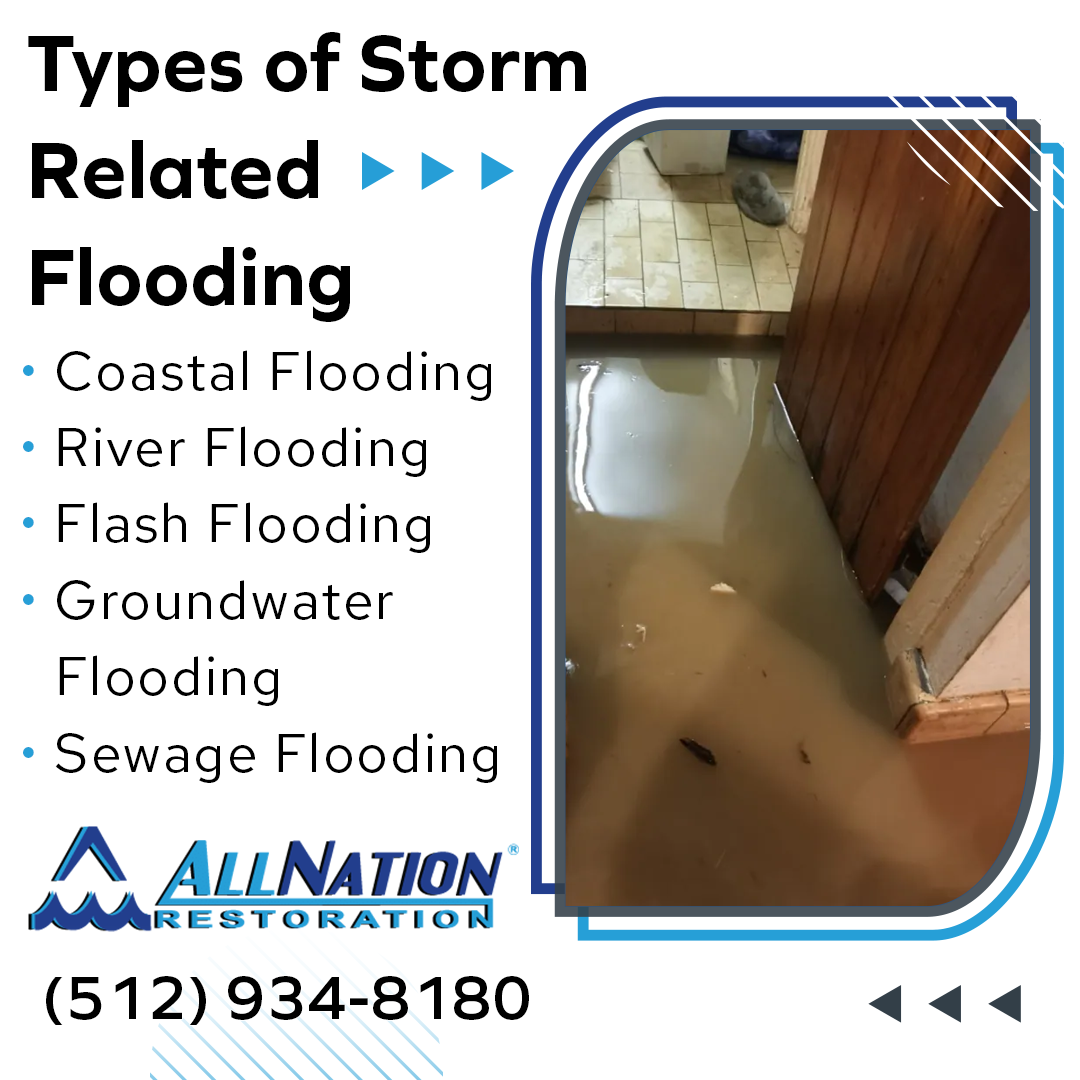Storms can produce different types of floods, resulting in various levels of storm damage. Knowing the kind of flood damage a property has will affect water damage restoration efforts and preventative measures to protect the building from future flood-related problems. Learn more about the most common flood types below.
Types of Storm-Related Flooding
Weather can produce five types of floods. Depending on a property's location, it could experience one or more of these situations.
Coastal Flooding
Coastal floods bring ocean water to land via heavy rainfall, storm surges, waves, and tides. Locations close to a coastline are vulnerable to this type of flooding. Unfortunately, these flood events often contribute to serious issues, like diseases from contaminated water exposure, mold damage, and respiratory illnesses from damp environments.
River Flooding
When waters rise above a riverbank due to heavy rainfall, snowmelt, ice jams, or prolonged thunderstorms, they can create a river flood. River floods are usually predictable. However, extensive property damage could occur if a river dam breaks.
Flash Flooding
Within six hours of a massive rainfall event, flash flooding can occur. They are the most common floods that develop due to hurricanes, severe thunderstorms, and tropical storms. However, a flash flood can result from mudslides or broken dams and levees.
Urban areas are likely to experience flash floods and extensive water damage from the lack of soil available to soak up the water. Places that don't get enough rainfall may also experience flash flooding during a storm because the ground cannot absorb water quickly enough.
Groundwater Flooding
Overwhelmed drainage systems can lead to groundwater flooding. This flooding issue tends to happen gradually, so property owners usually have enough time to remove or protect their belongings. Unfortunately, the flood could last for days or weeks until the ground reabsorbs the water.
Sewage Flooding
Heavy rainfall can overwhelm sewage systems, leading to sewage flooding. During the flood, untreated sewage can leak into water bodies near water treatment plants, causing foul-smelling, heavily contaminated water to back up through drains, showers, sinks, and toilets.
Sewage flooding is the most hazardous flood type because the water contains harmful chemicals and bacteria. Expert water damage restoration is essential for safe water cleanup involving sewage.
5 Flood Damage Prevention Tips
Sometimes, flood events can take a person by surprise, leaving little time to prepare. However, if the weather forecast includes situations that could jeopardize property and its contents, like a hurricane or severe thunderstorm, taking the following steps may minimize damage:
- Use dry flood protection materials like sandbags or tarps to prevent flooding
- Move or anchor outdoor furniture, signs, and other belongings
- Roll up and relocate area rugs
- Elevate office electronics
- Shut off electrical service
Water Damage Restoration from All Nation Restoration
All Nation Restoration is a premier water damage restoration company serving University Hills, Austin, TX, and nearby communities. Their skilled and highly trained technicians specialize in emergency water damage and mold removal services as well as biohazard cleanup and fire damage restoration. As a five-star rated company, they also offer 24/7 flood cleanup services.
Contact All Nation Restoration at (512) 934-8180 to request water cleanup, removal, or restoration services.
































